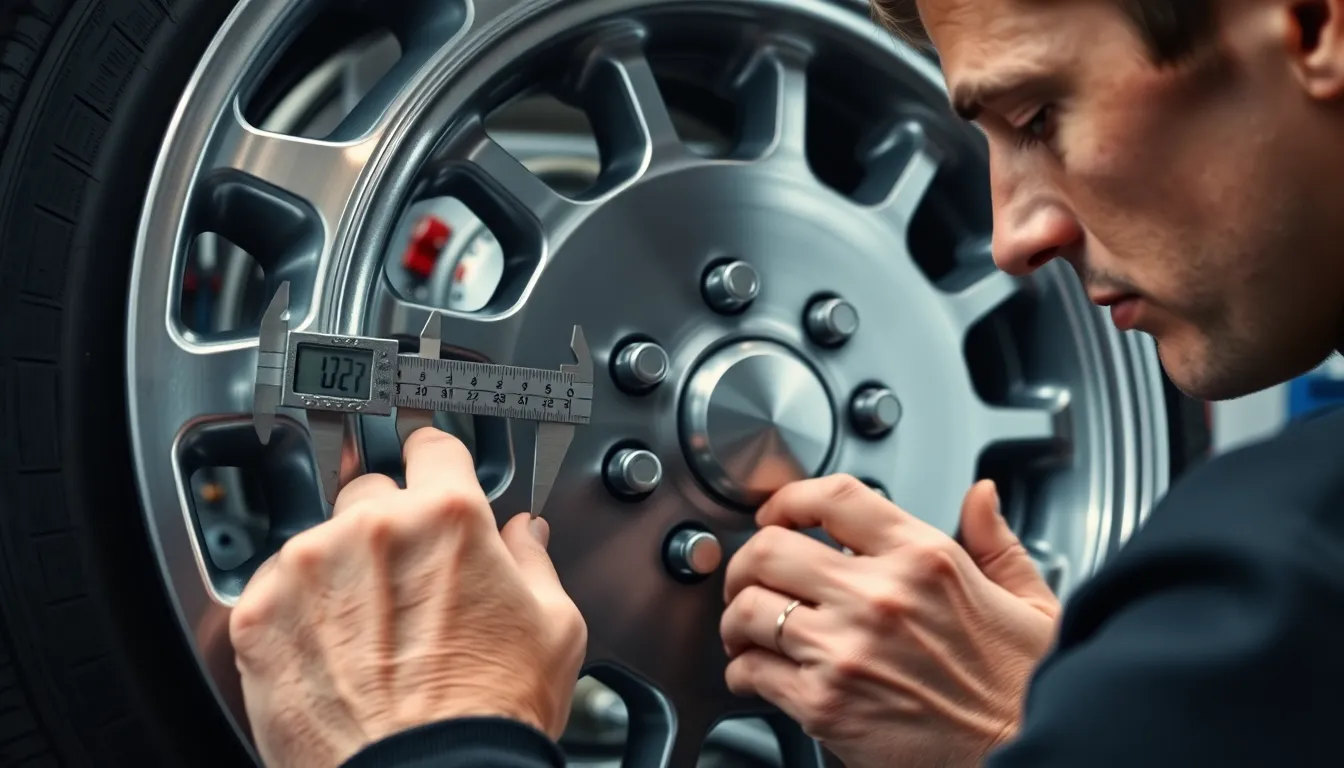We’ve all been there – standing in front of a wall of wheels wondering if that perfect set will actually fit our vehicle. The bolt pattern is the crucial measurement that determines compatibility and it’s surprisingly easy to get wrong.
Measuring your rim’s bolt pattern isn’t rocket science but it does require the right technique and tools. Whether you’re upgrading to aftermarket wheels or replacing a damaged rim we’ll show you exactly how to get accurate measurements every time. Getting this wrong means wasted money and the frustration of ordering wheels that simply won’t fit.
Most drivers think they need expensive tools or professional help but that’s not true. With just a ruler or caliper and our step-by-step process you’ll master bolt pattern measurement in minutes. We’ll cover both 4-lug and 5-lug patterns plus common mistakes that lead to costly errors.
What Is a Bolt Pattern and Why Does It Matter
Bolt pattern refers to the arrangement of lug holes on a wheel’s mounting surface. This pattern determines how your wheel attaches to your vehicle’s hub assembly through a exact number of bolt holes positioned at precise distances from the center.
The bolt pattern consists of two key measurements: the number of lug holes and the diameter of the circle that passes through the center of each hole. Common configurations include 4×100, 5×114.3, 6×139.7, and 8×170, where the first number indicates lug count and the second represents the bolt circle diameter in millimeters.
Getting the bolt pattern wrong creates several serious problems for vehicle owners. Wheels with incorrect bolt patterns won’t mount properly to your hub, leaving you with expensive wheels you can’t use. Forcing incompatible wheels onto your vehicle damages both the wheel and hub assembly, potentially creating dangerous driving conditions.
Vehicle manufacturers design exact bolt patterns for each model to ensure proper weight distribution and structural integrity. Your car’s bolt pattern affects wheel selection, aftermarket compatibility, and resale value when you decide to upgrade or replace damaged wheels.
Modern vehicles use standardized bolt patterns across different manufacturers, but these patterns vary significantly between car brands, truck models, and specialty vehicles. Understanding your vehicle’s exact bolt pattern saves time and money when shopping for replacement wheels or performance upgrades.
Tools You’ll Need to Measure Bolt Pattern
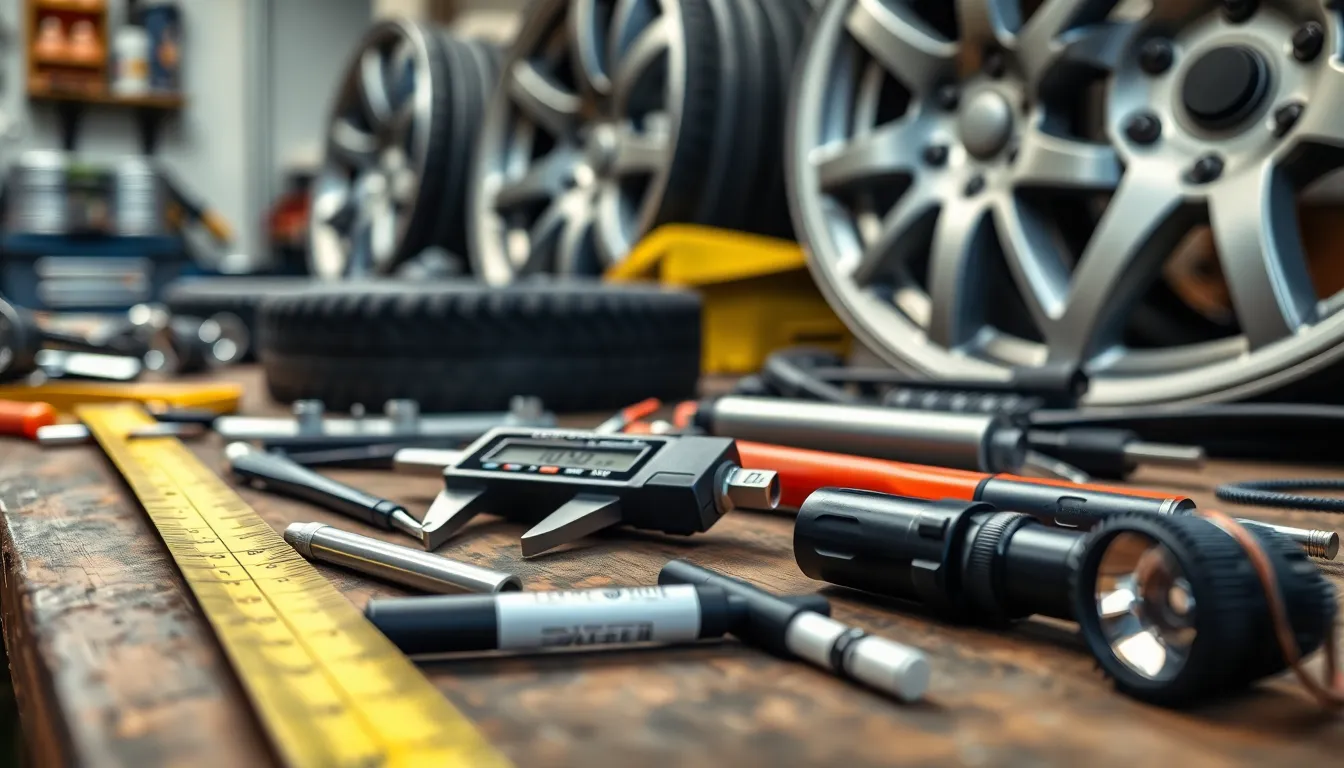
Measuring tape or ruler serves as the primary tool for bolt pattern measurement. We recommend using a ruler marked in both millimeters and inches for maximum compatibility with different measurement standards. Digital calipers provide enhanced precision when measuring across lug hole centers.
Marker becomes useful for marking reference points on the wheel surface. We find that marking the circle helps visualize the measurement path more clearly. Permanent markers work best on metal surfaces but erasable markers suffice for temporary measurements.
Bolt pattern gauge tool offers professional-level accuracy for frequent measurements. These specialized tools eliminate guesswork and provide instant readings for common bolt patterns. We suggest investing in a gauge tool if you regularly work with multiple vehicles or wheels.
Essential measurement tools include:
- Measuring tape with millimeter and inch markings
- Digital calipers for precise center-to-center measurements
- Fine-tip marker for marking reference points
- Bolt pattern gauge for quick professional readings
- Flashlight for improved visibility in wheel wells
Paper and pen help record measurements for future reference. We recommend noting both the lug count and diameter measurement to avoid confusion later. Camera phones capture visual records of wheel markings and measurements for verification purposes.
How to Identify the Number of Bolt Holes

Visual inspection provides the most straightforward method for counting bolt holes on your rim. Look directly at the wheel’s center where the mounting surface contains evenly spaced holes designed for lug nuts or bolts.
Most rims feature between 4 and 6 bolt holes arranged in a circular pattern around the center hub. Count each hole systematically by starting at the top position and moving clockwise around the wheel’s mounting surface.
Standard bolt hole configurations include:
- 4-bolt patterns (common on compact cars and economy vehicles)
- 5-bolt patterns (popular on mid-size sedans and SUVs)
- 6-bolt patterns (typical for trucks and larger vehicles)
- 8-bolt patterns (found on heavy-duty trucks and commercial applications)
Specialty or industrial rims may contain more than 6 holes depending on the vehicle’s weight requirements and manufacturer specifications. Take note of the exact count since this number forms the first part of your bolt pattern measurement.
Position yourself to view the wheel straight-on rather than at an angle to ensure accurate counting. Poor lighting or viewing angles can cause you to miscount holes or mistake decorative elements for actual bolt holes.
Mark your starting point with a small piece of tape if the holes appear identical to avoid double-counting. This technique proves especially helpful when working with wheels that have 6 or more bolt holes arranged in complex patterns.
Measuring 4 and 6 Lug Bolt Patterns
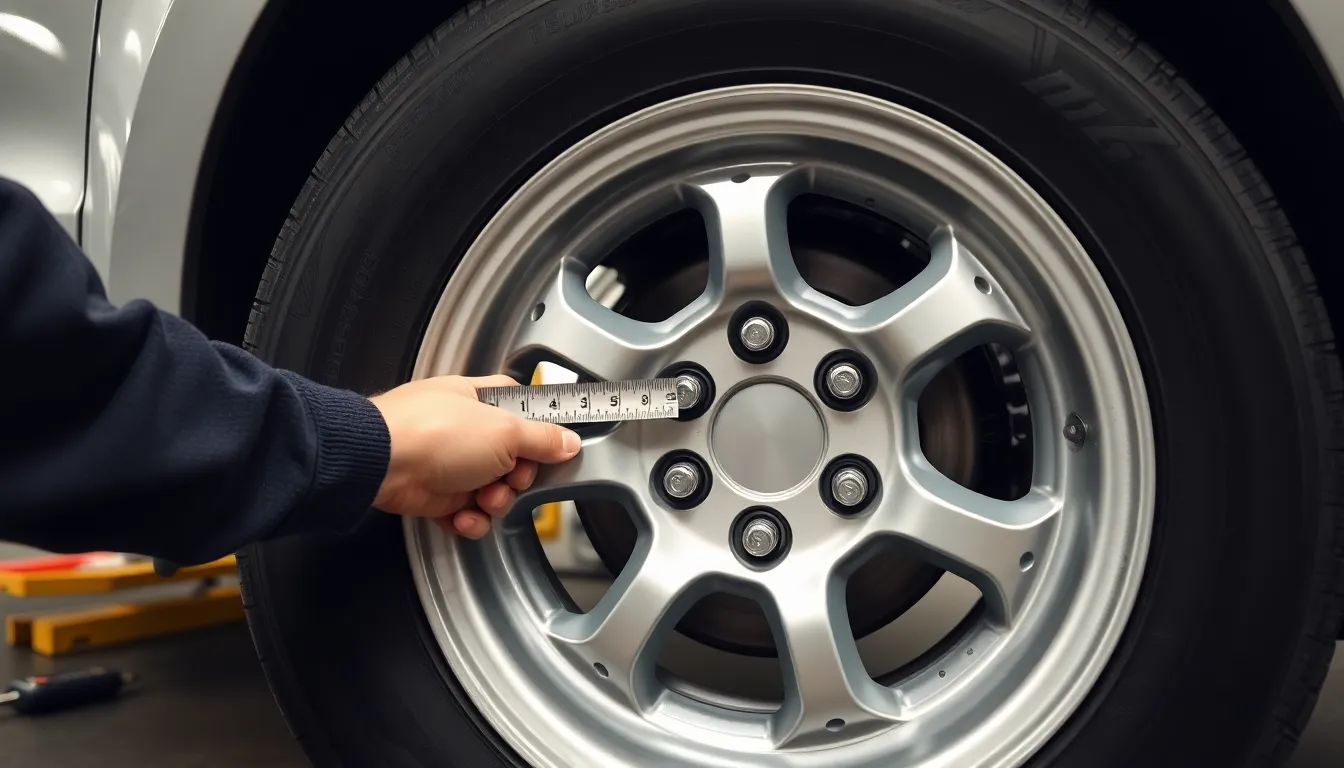
Even-numbered lug patterns simplify the measurement process compared to odd-numbered configurations. We can measure these patterns by drawing a straight line directly across the wheel from one lug hole to its opposite counterpart.
Step-by-Step Guide for Even-Numbered Patterns
Position the wheel on a flat surface with all lug holes clearly visible. Clean any dirt or debris from the lug holes to ensure accurate measurements.
Locate the center point of any lug hole on the rim. Mark this starting position with your finger or a small piece of tape for reference.
Identify the opposite lug hole directly across from your starting point. For 4-lug patterns this creates a straight line through the wheel’s center while 6-lug patterns require counting three holes clockwise or counterclockwise to find the opposite position.
Measure the distance from the center of your starting lug hole straight across to the center of the opposite lug hole using your ruler or digital calipers. This measurement represents the bolt circle diameter.
Record the measurement in millimeters for precision since most bolt patterns use metric specifications. Take multiple measurements to verify accuracy and consistency.
Double-check your work by measuring from a different pair of opposite lug holes to confirm the same diameter reading.
Common Measurements for 4 and 6 Lug Wheels
| Pattern Type | Common Bolt Circles | Typical Applications |
|---|---|---|
| 4-lug | 100mm, 108mm, 114.3mm | Compact cars, small sedans |
| 6-lug | 130mm, 135mm, 139.7mm | Trucks, SUVs, commercial vehicles |
Four-lug patterns typically measure between 100mm and 114.3mm with 4x100mm being the most common configuration for European compact vehicles. Japanese manufacturers often use 4x100mm or 4×114.3mm depending on the vehicle size and weight requirements.
Six-lug patterns range from 130mm to 139.7mm with 6×139.7mm dominating the truck and SUV market. European commercial vehicles frequently feature 6x130mm while some luxury SUVs use 6x135mm for enhanced load distribution.
Accuracy matters since even small variations can prevent proper wheel mounting. A 6x130mm wheel won’t fit a 6x135mm hub even though having the same lug count.
Measuring 5 Lug Bolt Patterns
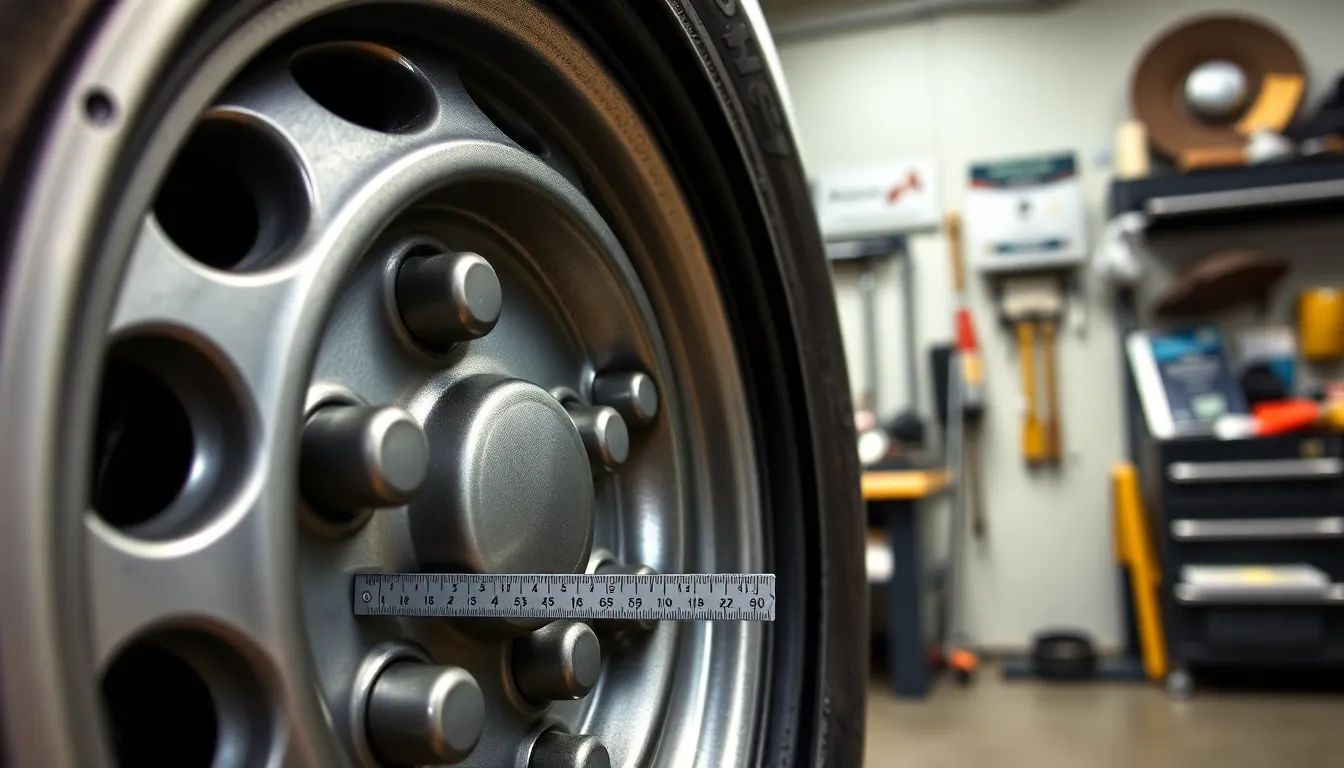
Measuring 5 lug bolt patterns presents unique challenges since the lug holes don’t align directly opposite each other like 4 or 6 lug configurations. We can overcome this obstacle using specialized techniques designed specifically for odd-numbered lug patterns.
Using the Center-to-Center Method
The center-to-center method for 5 lug wheels requires a different approach than even-numbered patterns. We can’t measure directly across opposite lugs because they don’t exist in 5 lug configurations. Instead, we measure from the center of one lug to the center of another lug by skipping one position.
Finding the bolt circle diameter involves measuring from one lug hole center to the lug hole that’s two positions away. This measurement gives us an approximation of the bolt pattern rather than the exact diameter. The bolt pattern represents the diameter of an imaginary circle passing through all five lug hole centers.
Converting this measurement to the actual bolt circle diameter requires mathematical calculation or reference tables. We multiply the measured distance by exact conversion factors based on the 5 lug geometry. Most mechanics and wheel professionals use these calculations to determine precise bolt patterns from the approximate measurements.
Alternative Measurement Techniques
Bolt pattern gauges provide the most accurate method for measuring 5 lug patterns without complex calculations. These specialized tools feature multiple gauge points that align with lug holes to determine the exact bolt circle diameter. Professional tire shops and wheel retailers commonly use these gauges for precise measurements.
Paper tracing offers another reliable technique for determining 5 lug bolt patterns. We place paper over the wheel face and mark each lug hole center with a pencil. Removing the paper allows us to use a protractor and ruler to measure the resulting pattern and calculate the bolt circle diameter.
Vehicle specifications eliminate the guesswork entirely when measuring bolt patterns. We can reference the owner’s manual or manufacturer’s website to find exact bolt pattern information. This method saves time and ensures accuracy without requiring any physical measurements or specialized tools.
Consulting online databases provides quick access to bolt pattern information for exact vehicle makes and models. Many automotive websites maintain comprehensive databases listing bolt patterns by year and model. Cross-referencing our vehicle information with these databases confirms the correct measurements before purchasing new wheels.
Reading and Understanding Bolt Pattern Specifications
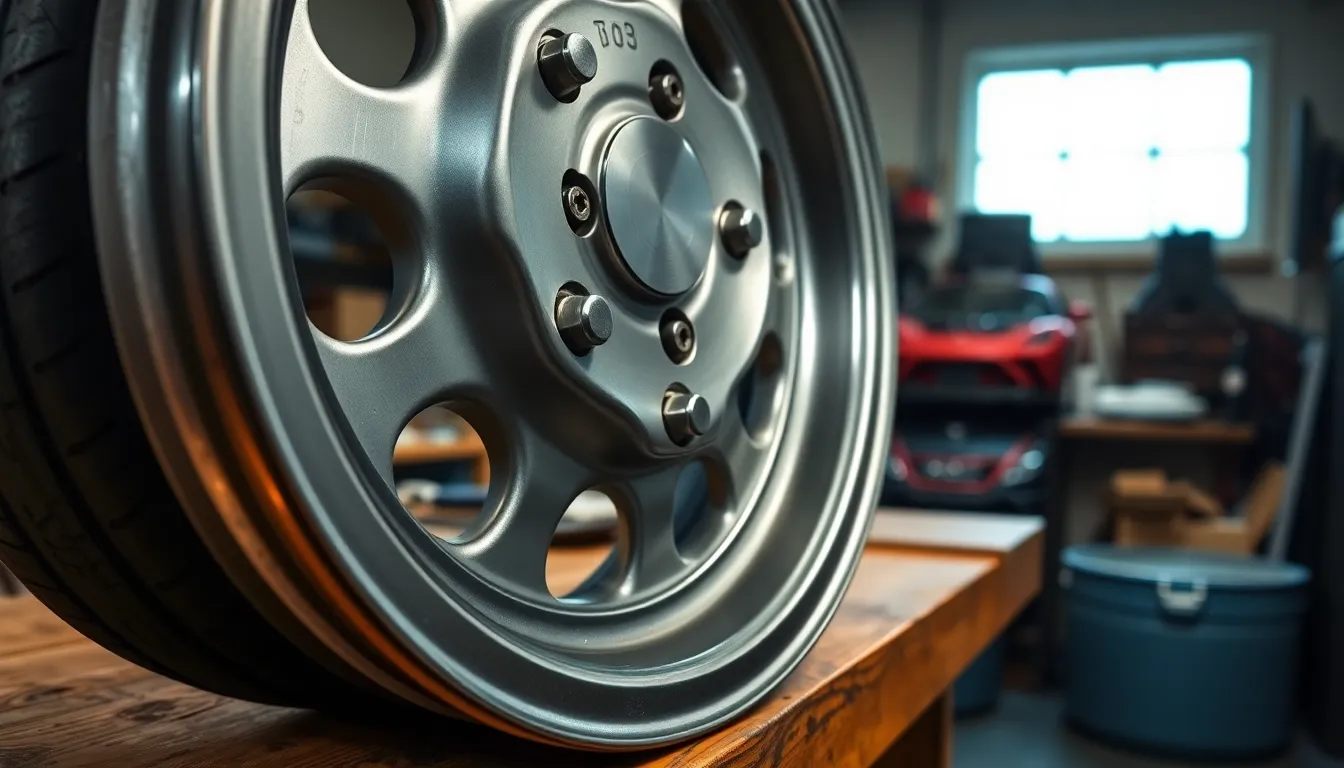
Reading bolt pattern specifications accurately ensures proper wheel fitment and safety. The specification format follows a standard convention: number of lugs × bolt circle diameter, expressed as “5×114.3” or “4×100”.
Standard Bolt Pattern Format
Bolt patterns use a two-part numbering system that identifies wheel compatibility. The first number indicates the total lug holes on the wheel. The second number represents the bolt circle diameter measured in millimeters or inches.
| Lug Count | Common Diameters (mm) | Common Diameters (inches) | Typical Applications |
|---|---|---|---|
| 4 | 100, 108, 114.3 | 4.0, 4.25, 4.5 | Compact cars, economy vehicles |
| 5 | 100, 108, 114.3, 120 | 4.0, 4.25, 4.5, 4.72 | Sedans, SUVs, trucks |
| 6 | 139.7, 135, 127 | 5.5, 5.31, 5.0 | Large trucks, commercial vehicles |
| 8 | 165.1, 170, 180 | 6.5, 6.69, 7.09 | Heavy-duty trucks, dually wheels |
Converting Between Metric and Imperial
Converting measurements between millimeters and inches maintains consistency across different specification formats. Multiplying millimeter measurements by 0.03937 produces inch equivalents. Conversely, multiplying inch measurements by 25.4 yields millimeter values.
Common conversions include 114.3mm equals 4.5 inches, while 100mm equals 3.94 inches. Many manufacturers specify bolt patterns in both units for international compatibility.
Interpreting Manufacturer Specifications
Manufacturer specifications provide authoritative bolt pattern information for exact vehicle models. Owner’s manuals typically list bolt patterns in the wheel and tire section. Service manuals contain detailed diagrams showing exact measurements and tolerances.
Vehicle identification numbers enable precise specification lookup through manufacturer databases. Online VIN decoders often include bolt pattern information alongside other wheel specifications.
Common Specification Variations
Specification variations occur between different measurement systems and regional standards. European manufacturers frequently use metric measurements exclusively. American manufacturers often provide both metric and imperial specifications.
Some specifications include additional parameters like center bore diameter and offset measurements. Center bore diameter affects hub compatibility, while offset determines wheel positioning relative to the suspension components.
Verification Methods
Cross-referencing multiple sources confirms bolt pattern accuracy before purchasing wheels. Comparing physical measurements with manufacturer specifications identifies any discrepancies. Professional wheel retailers maintain comprehensive databases for verification purposes.
Physical templates and bolt pattern gauges provide hands-on verification tools. These instruments eliminate measurement errors and confirm compatibility before installation.
Common Bolt Pattern Sizes by Vehicle Type
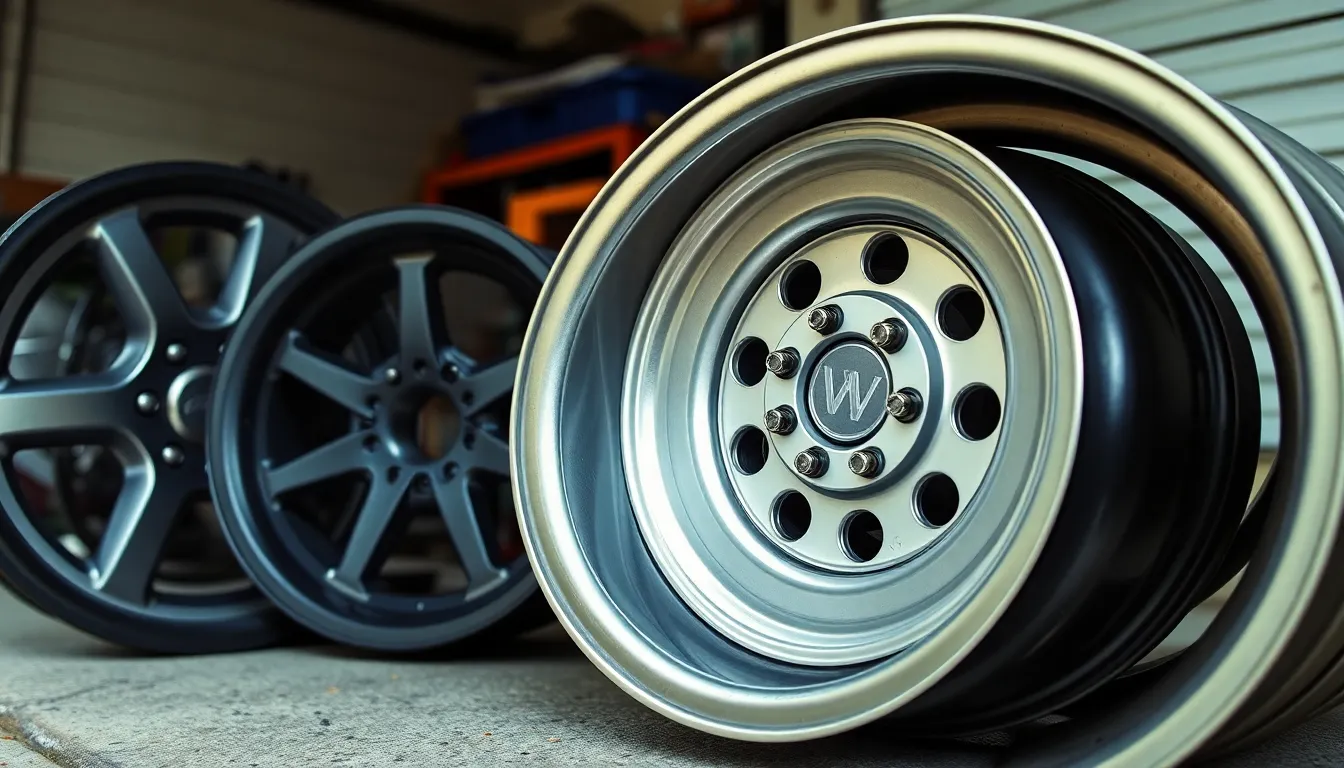
Different vehicle categories use distinct bolt patterns designed for their exact weight requirements and performance characteristics. Understanding these standard configurations helps narrow down your measurement expectations before taking physical measurements.
Passenger Cars and Sedans
Passenger cars and sedans typically feature smaller bolt patterns optimized for lighter vehicle weights and everyday driving conditions. The most common configurations include 4x100mm and 4x108mm patterns found on compact cars like the Honda Civic and Ford Focus. Mid-size sedans often use 5x100mm patterns (Subaru Legacy) or 5×114.3mm patterns (Toyota Camry and Honda Accord). European luxury sedans frequently adopt 5x112mm patterns seen on BMW 3 Series and Mercedes C-Class vehicles. These smaller diameter patterns reflect the reduced load requirements compared to larger vehicles while maintaining adequate strength for standard road use.
Trucks and SUVs
Trucks and SUVs require larger bolt patterns to handle increased vehicle weight and towing capacity demands. Full-size pickup trucks commonly use 6x135mm patterns (Ford F-150) or 6×139.7mm patterns (Chevrolet Silverado and GMC Sierra). Heavy-duty trucks step up to 8×165.1mm patterns (Ford F-250/F-350) or 8x170mm patterns for maximum load capacity. Mid-size SUVs often share patterns with trucks, utilizing 6×139.7mm configurations, while larger SUVs may use 6x135mm or even 8-lug patterns depending on their gross vehicle weight rating. These robust patterns distribute wheel loads across more attachment points for enhanced safety and durability.
Performance and Sports Cars
Performance and sports cars use bolt patterns engineered for high-speed stability and precise handling characteristics. Many European sports cars adopt 5x112mm patterns (Porsche 911, Audi A4) or 5x120mm patterns (BMW M3, M5). Japanese performance vehicles commonly feature 5×114.3mm patterns (Nissan 350Z, Infiniti G35) that balance strength with weight considerations. Some high-end supercars use unique patterns like 5x130mm (Porsche 911 Turbo) designed specifically for extreme performance applications. Racing-derived vehicles may feature center-lock patterns or specialized configurations that differ from standard production specifications, requiring professional consultation for proper wheel selection.
Troubleshooting Measurement Issues

Incorrect measurements often result from improper tool placement or rushing through the measuring process. We recommend double-checking your measurements by taking multiple readings from different angles to ensure consistency. Digital calipers provide the most accurate results when measuring lug hole centers, especially for 5-lug patterns where precision is critical.
Lack of precision frequently occurs when using basic rulers instead of specialized measuring tools. We suggest investing in a bolt pattern gauge or digital calipers for measurements requiring exact specifications. Professional-grade tools eliminate guesswork and reduce measurement errors that can lead to purchasing incompatible wheels.
Difficulty with measurement commonly arises when dealing with damaged or corroded lug holes. We advise cleaning all debris and rust from the lug holes before taking measurements to ensure accurate readings. Wire brushes or compressed air can help remove obstructions that might interfere with proper tool placement.
Complex bolt patterns on custom or modified vehicles may not match standard specifications. We recommend consulting instructional videos or manufacturer documentation when encountering unusual configurations. Online databases and automotive forums often provide exact guidance for rare or aftermarket wheel patterns.
Poor lighting conditions can significantly impact measurement accuracy and lead to reading errors. We suggest using a flashlight or work light to illuminate the wheel surface clearly during the measuring process. Adequate lighting helps identify the exact center points of lug holes and ensures proper tool alignment.
Temperature variations can affect metal expansion and potentially alter measurements on precision wheels. We recommend taking measurements at room temperature when possible and allowing wheels to acclimate if they’ve been exposed to extreme heat or cold. Consistent environmental conditions help maintain measurement accuracy across different sessions.
Conclusion
Taking the time to accurately measure your rim’s bolt pattern saves you from costly mistakes and ensures your safety on the road. With the right tools and techniques we’ve outlined you can confidently determine your vehicle’s exact specifications whether you’re dealing with a straightforward 4-lug pattern or a more complex 5-lug configuration.
Remember that precision matters when it comes to wheel fitment. Double-checking your measurements and cross-referencing with manufacturer specifications gives you the confidence to make informed purchasing decisions.
Armed with this knowledge you’re now ready to shop for new wheels with complete certainty that they’ll fit your vehicle perfectly. The investment in proper measurement tools and technique pays for itself the first time you avoid buying incompatible wheels.
Frequently Asked Questions
What is a bolt pattern and why does it matter?
A bolt pattern is the arrangement of lug holes on a wheel’s mounting surface, consisting of the number of lug holes and the diameter of the circle passing through each hole’s center. It matters because using the wrong bolt pattern can lead to improper mounting, damage to wheel and hub assemblies, and dangerous driving conditions. Vehicle manufacturers design specific patterns for proper weight distribution and structural integrity.
What tools do I need to measure a bolt pattern accurately?
You’ll need a measuring tape or ruler with millimeter and inch markings, digital calipers for precision, a marker for reference points, and a flashlight for visibility. Optional professional tools include a bolt pattern gauge for enhanced accuracy. Paper, pen, and a camera phone are helpful for recording measurements and future reference.
How do I measure a 4-lug or 6-lug bolt pattern?
For even-numbered lug patterns, clean the lug holes and mark a starting point. Measure the distance between the centers of directly opposite lug holes using a ruler or calipers. This measurement gives you the bolt circle diameter. The format is “number of lugs × diameter” (e.g., 4x100mm or 6×139.7mm).
How do I measure a 5-lug bolt pattern?
Since 5-lug patterns don’t have directly opposite holes, use the center-to-center method. Measure from the center of one lug to the center of another lug, skipping one position. This approximates the bolt circle diameter. You can also use bolt pattern gauges, paper tracing methods, or consult vehicle specifications for accuracy.
What are the most common bolt patterns for different vehicle types?
Passenger cars typically use smaller patterns like 4x100mm or 5×114.3mm. Trucks and SUVs require larger configurations such as 6x135mm or 8x170mm to handle heavier loads. Performance and sports cars often have specialized patterns designed for high-speed stability. Each vehicle category has patterns tailored to its specific weight and performance requirements.
How do I troubleshoot measurement issues?
Common problems stem from improper tool placement or rushing the process. Double-check measurements using digital calipers, especially for 5-lug patterns. Clean damaged or corroded lug holes before measuring. Ensure adequate lighting and consistent temperature conditions. Consult manufacturer documentation or instructional videos for complex patterns, and always verify measurements through multiple sources.

